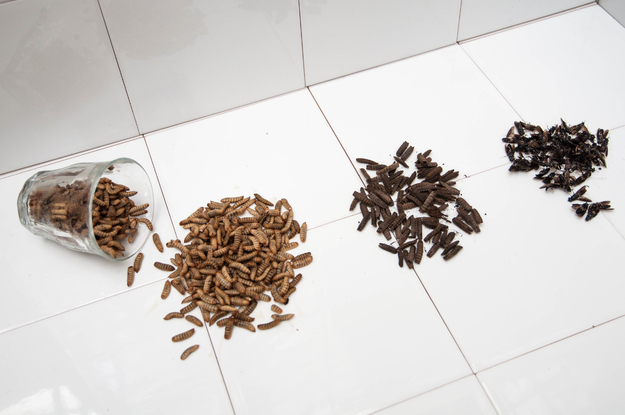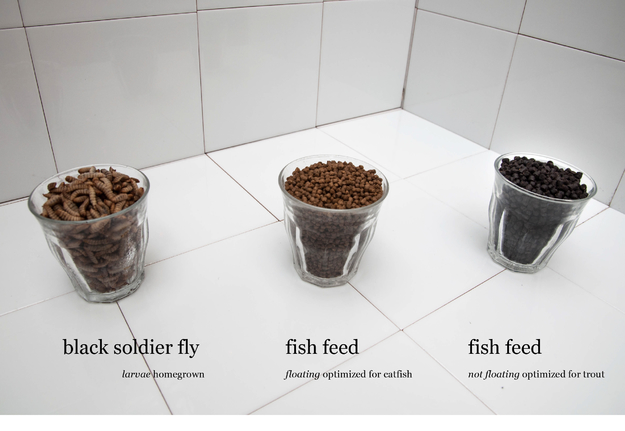after our first stock of fish, which were trouts, we decided to change to catfish, as they are fitting more adequately in our location. afterwards we decided for african catfish and tried to optimize the feeding schedule for our new generations.
we just finished the old fishfood-stock which was sinking food and got a new kind of fishfeed.
It's optimized for catfish and floating; so it's easier to observe how well the fish are responding to our feeding schedule.
Another approach is the introduction to Black Soldier Fly larvae we are growing to supplement our feeding. The endgoal should be to replace the commercial industrial fishfeed. Growing BSF-grubs as a substitution for fish feed is not only cheaper but also reduces the ecological footprint we are leaving on our ecosystems and oceans. There are also antioxidants and other supplements included in the feed which wouldn't be necessary if you feed grubs which are essentially grown of your own bio-waste. BSF's are great converters of biowaste to proteins.
A great benefit of this computing is that you also got composting use as a product that you can also add to your aquaponics system to pump up the nutrients.
At the moment we have a grub supplier (protix biosystems) that is willing to supply us with frozen grubs that we can easily defrost and feed to our fish. Protix uses waste streams to grow larvae that can den be used as a feed for livestock.


